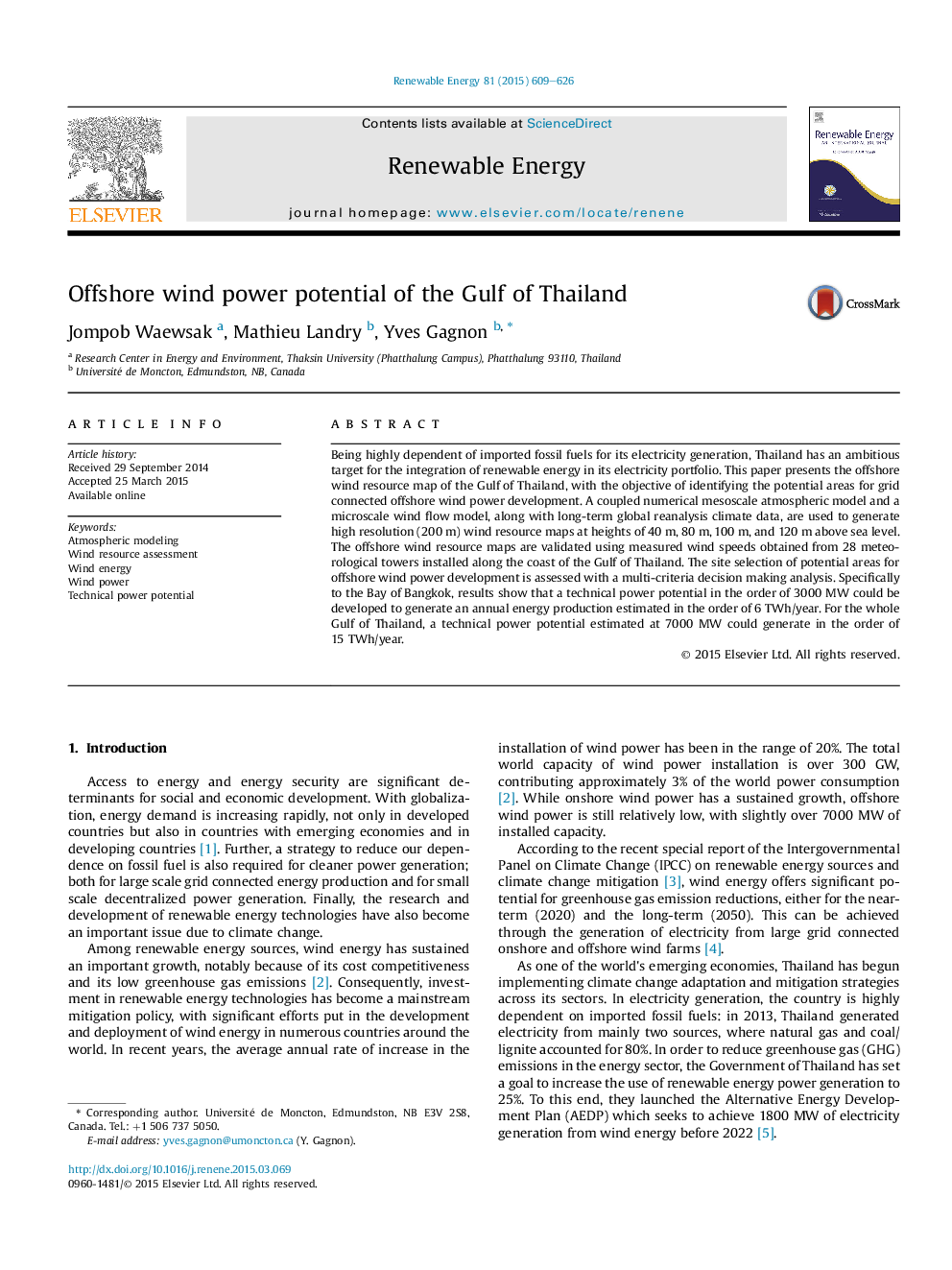| Article ID | Journal | Published Year | Pages | File Type |
|---|---|---|---|---|
| 6767284 | Renewable Energy | 2015 | 18 Pages |
Abstract
Being highly dependent of imported fossil fuels for its electricity generation, Thailand has an ambitious target for the integration of renewable energy in its electricity portfolio. This paper presents the offshore wind resource map of the Gulf of Thailand, with the objective of identifying the potential areas for grid connected offshore wind power development. A coupled numerical mesoscale atmospheric model and a microscale wind flow model, along with long-term global reanalysis climate data, are used to generate high resolution (200Â m) wind resource maps at heights of 40Â m, 80Â m, 100Â m, and 120Â m above sea level. The offshore wind resource maps are validated using measured wind speeds obtained from 28 meteorological towers installed along the coast of the Gulf of Thailand. The site selection of potential areas for offshore wind power development is assessed with a multi-criteria decision making analysis. Specifically to the Bay of Bangkok, results show that a technical power potential in the order of 3000Â MW could be developed to generate an annual energy production estimated in the order of 6Â TWh/year. For the whole Gulf of Thailand, a technical power potential estimated at 7000Â MW could generate in the order of 15Â TWh/year.
Related Topics
Physical Sciences and Engineering
Energy
Renewable Energy, Sustainability and the Environment
Authors
Jompob Waewsak, Mathieu Landry, Yves Gagnon,
